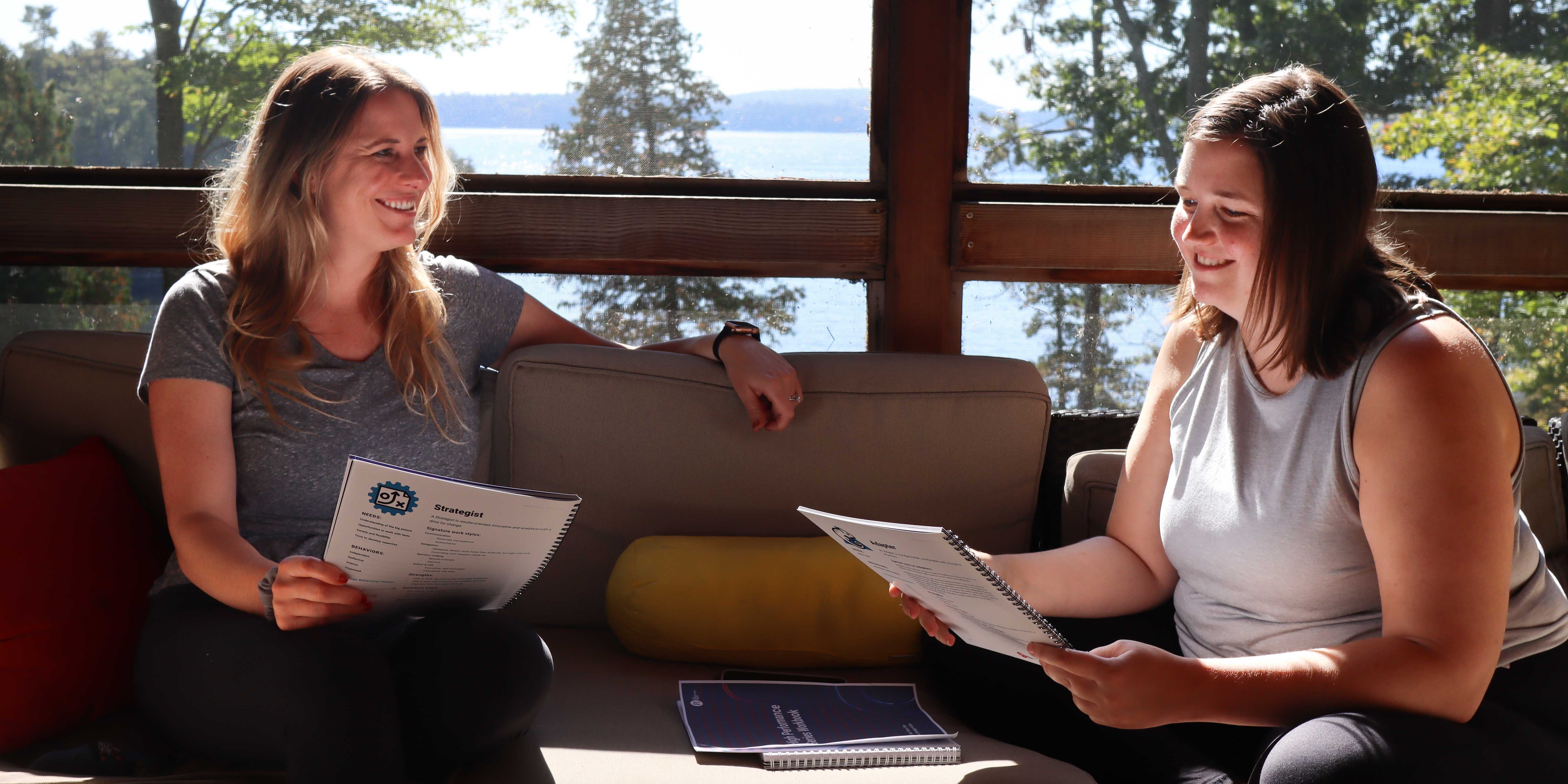2 min read
Crafting Your Leadership Team's BHAG: A Simple Guide
Are you ready to take your leadership team to new heights? One powerful tool that can propel your team and organization forward is the BHAG, or Big,...
2 min read
Damon Clark : Jul 6, 2023 8:48:52 PM

Team building experiences are often hailed as the key to fostering strong bonds, enhancing communication, and boosting morale within a group. However, it is no secret that many team-building activities can leave participants feeling less than enthusiastic.
I know this, not because I've been on many during my corporate career but during my side hustle owning climbing gyms, I was guilty of hosting many corporate clients and seeing the look of dread on some of the participant's faces. I was providing team-building, in fact, I was doing the very opposite.
This led me on journey to improve the format by ensuring inclusivity, team behavioral changes, and measurable improvement outcomes.
Join me as we delve into the world of lackluster team-building experiences and uncover the reasons behind their dread-inducing nature.
Chapter 1: The Forced Fun Syndrome
One of the primary culprits behind dreadful team-building experiences is the feeling of forced fun. When activities are overly contrived or artificially injected with excitement, participants can quickly sense the disingenuous nature of the event. Icebreaker games, trust falls, or awkward "get-to-know-you" exercises can often feel awkward and disconnected from the reality of the team's work environment, leading to a lack of engagement and a feeling of insincerity.
Chapter 2: Lack of Relevance and Practicality
Another reason why team-building experiences often fall flat is the lack of relevance and practicality to the team's actual work. When activities fail to align with the team's goals, objectives, or challenges, participants may struggle to see the value in investing their time and energy. Meaningful team-building experiences should provide opportunities for skill development, problem-solving, and collaboration that directly translate into the workplace, allowing team members to feel a sense of purpose and applicability.
Chapter 3: Poorly Designed Activities
The design and execution of team building activities play a vital role in their success or failure. Many experiences suffer from poor planning, unclear instructions, or a lack of variety. Monotonous and repetitive activities can quickly drain participants' enthusiasm and fail to stimulate their minds. Additionally, activities that overly focus on competition or reward individual achievements instead of fostering teamwork can inadvertently create a divisive and uncooperative atmosphere among team members.
Chapter 4: Ignoring Individual Preferences
Team-building experiences often assume a one-size-fits-all approach, disregarding the diverse preferences and interests of team members. While some individuals may thrive in physical challenges, others may prefer intellectual or creative pursuits. Ignoring these differences can lead to disengagement and make team members feel disconnected from the experience. Tailoring activities to the specific interests and strengths of the team can help create a more inclusive and enjoyable environment for everyone involved.
Chapter 5: Lack of Follow-Up and Integration
One of the biggest downfalls of team-building experiences is the lack of follow-up and integration into the team's everyday work life. After the initial event, there is often a lack of continued support, reinforcement, and application of the skills and lessons learned. Without a deliberate effort to integrate the experience into the team's workflow and provide ongoing opportunities for growth and collaboration, the impact of the team-building activity quickly fades away, leaving participants feeling like it was all just a temporary distraction.
Conclusion:
While team-building experiences have the potential to be transformative and impactful, many fall short of their intended goals, leaving participants with a sense of dread and disengagement. By addressing the issues of forced fun, relevance, activity design, individual preferences, and follow-up, organizations can create team-building experiences that genuinely inspire and empower teams. It's time to bid farewell to the dreadful team-building experiences of the past and embrace a new era of meaningful, enjoyable, and effective team-building initiatives.
The good news? Talent Optimizers provide behavioral-based team-building experiences that tackle all these challenges head-on. For more information, click the big button below.
Talent Optimizers Team Experiences
|
Damon Clark |
.png)
2 min read
Are you ready to take your leadership team to new heights? One powerful tool that can propel your team and organization forward is the BHAG, or Big,...

In the dynamic landscape of the modern workplace, understanding your unique behavioral traits and harnessing them for success has never been more...
 Read More
Read More